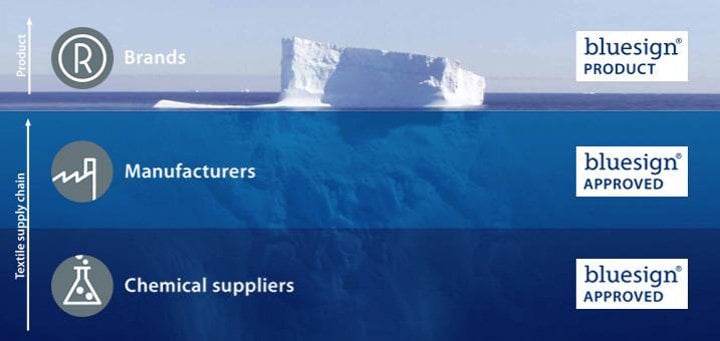The Bluesign is a standard that can be used by brands, their factories and all the way to their chemical suppliers providing that they meet the Blue Sign requirements. It aims to change the environmental impact of textiles for goods (for the better obvs). It pushes for traceability as brands must use at least 90% BlueSign qualified suppliers throughout the supply chain and document all tier 1 and tier 2 suppliers in order to use the standard. This is important because, like the picture (thanks Bluesign), the brands are often the tip of the iceberg in terms of the products journey.

So how do you get the Blue Sign? The brand/ supplier/ factory must act responsibly and sustainably in regard to the people, environment and resources. This sounds admittedly vague but if you dig into the BlueSign site they have some quite specific regulations – for example on chemical use. They list 600 banned or limited chemicals and allow firms to phase out the use of these which makes the standard more accessible. There is a license fee followed by a yearly fee which Bluesign state is possible to treat as an investment although undoubtedly makes the standard less accessible to smaller brands and suppliers. The BlueSign team independently verify that the requirements are met and can conduct unannounced company visits.
There are currently over 500 Bluesign partners! Here’s a short list of some our fave brands: Patagonia / Berghaus / The North Face / Adidas / Outerknown / Everlane / Nike
Learn more at: bluesign.com/en/business